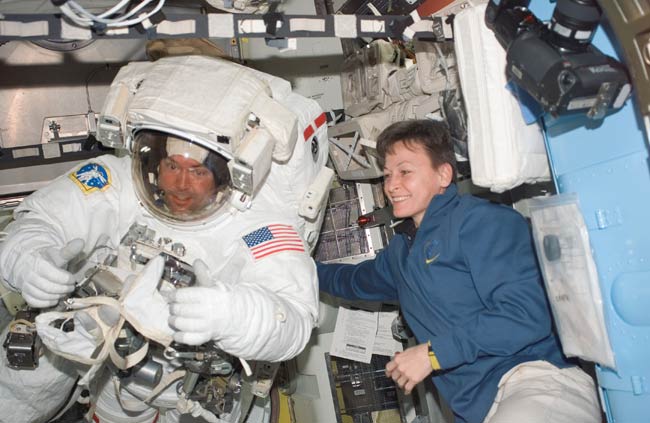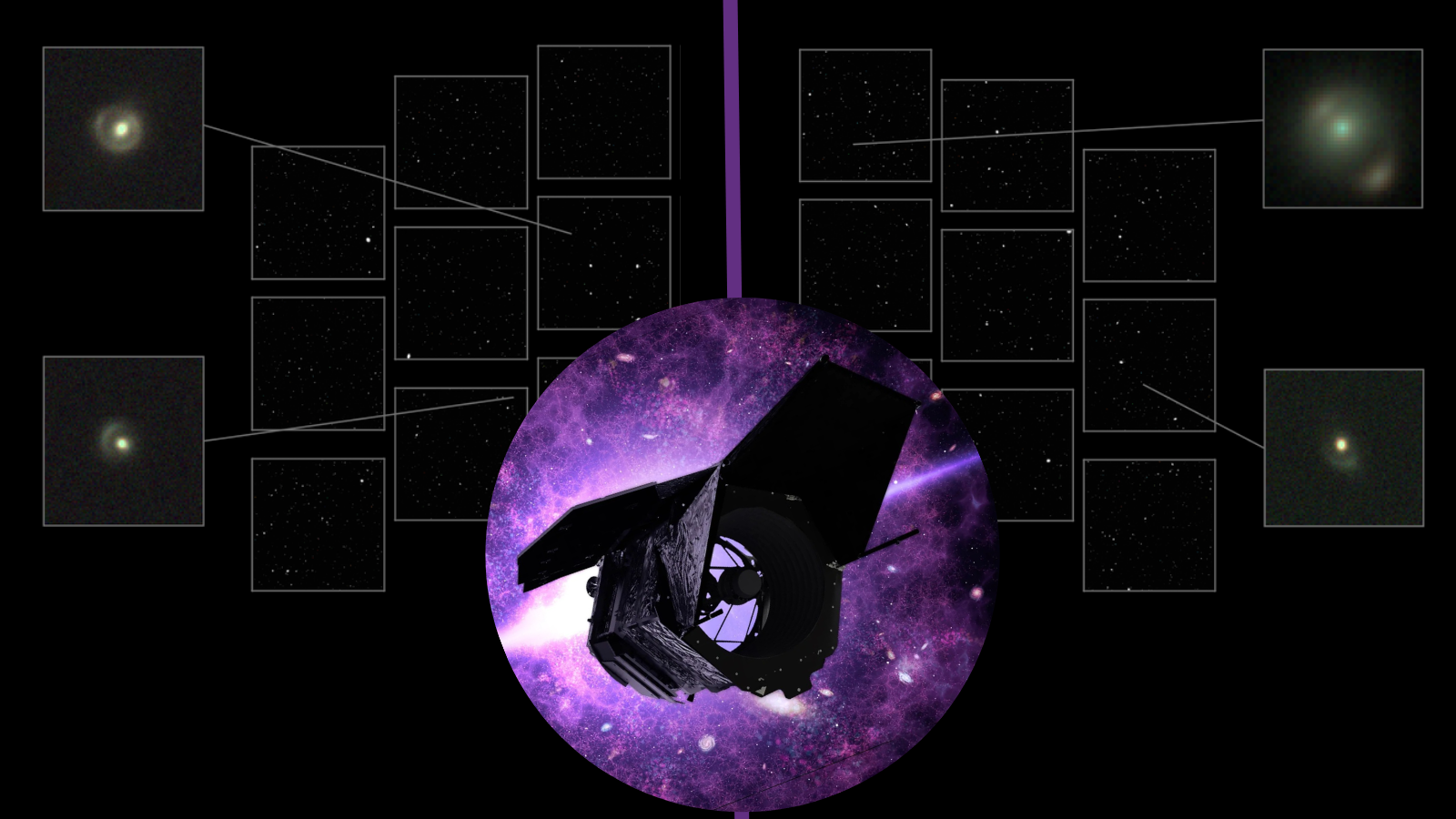Astronauts to Test Shuttle Heat Shield Fix in Spacewalk

HOUSTON — Two astronauts will float outside the International Space Station (ISS) Thursday armed with a space age caulk gun and its goo-like ammo to test their effectiveness in shuttle heat shield repairs.
Spacewalkers Robert Behnken and Mike Foreman will begin their orbital work at 6:28 p.m. EDT (2228 GMT) to demonstrate a technique for fixing dinged shuttle heat shield tiles.
"While we've been able to test this material on the ground, we have not been able to test it both in weightless and the vacuum of space at the same time," Foreman said from orbit late Wednesday during a series of televised interviews. "We'd like to know how well we'd be able to use it in case we ever need it for tile repair."
Foreman and Behnken will devote the bulk of their planned 6 1/2-hour spacewalk to testing the shuttle repair tool, known to NASA as the Tile Repair Ablator Dispenser (TRAD), and its gooey filler material.
NASA developed the device and tile filler after the tragic 2003 loss of the shuttle Columbia and its seven-astronaut crew. That shuttle was destroyed during atmospheric reentry due to a hole in its left wing-mounted heat shield.
"It's kind of like a big, fancy caulk gun," said Mike Moses, NASA's lead shuttle flight director for Endeavour's flight, adding that the device mixes two different materials into a thick, sticky — but heat-resistant — paste that hardens as it cures. "Toothpaste is really the best way I'd describe it."
About the size of a small, round vacuum cleaner, the TRAD device contains two materials that combine into an ablative filler inside the gun-like applicator as an astronaut squeezes it into a dinged, gouged or otherwise damaged shuttle tile.
Breaking space news, the latest updates on rocket launches, skywatching events and more!
The cylindrical container fits under a spacewalking astronaut's life support and emergency rocket pack. It is much slimmer than an earlier incarnation, which was mounted onto an extra backpack and tended to induce bubbles into the heat shield repair goo, Moses said.
During today's test, Foreman will squeeze the material intentionally damaged sample tiles, some of which mimic actual damage sustained by Endeavour on its last flight in August 2007. The samples will be returned to Earth in the shuttle's payload bay for analysis.
NASA engineers hope the test will help them better understand how the material cures under real space conditions, and whether bubbles could cause an effect like that of rising bread, where the ablative filler swells above the rim of a damage site and generates hotter temperatures downstream.
"That's probably worse than the hole itself," Moses said in a briefing here at the Johnson Space Center, adding that engineers are confident the goo, itself, will perform as designed. "This test is more to refine our technique of applying it."
NASA initially hoped to test the TRAD gun and goo during an October 2007 shuttle flight, but deferred the demonstration to repair a torn solar wing outside the space station.
The space agency wants to gain experience with the repair method before the planned Aug. 28 launch of the shuttle Atlantis on the last flight to overhaul the Hubble Space Telescope. Unlike ISS construction flights, Hubble-bound astronauts cannot seek safe haven aboard the space station because the Hubble observatory is in a different orbit.
NASA will prepare a second shuttle to serve as a rescue ship should an emergency occur. But the space agency also wants to give the Hubble servicing crew as many in-flight repair tools as possible.
Since NASA returned its shuttle fleet to flight in 2005, the agency has tested carbon composite patches and a gray, heat-resistant primer to repair damaged shuttle tiles, as well as a putty-like black paste to mend dings in an orbiter's vital wing and nose-mounted heat shield panels.
"So it's going to be really valuable to actually have a test of this in case we ever need it in our bag of tricks for a shuttle repair," Behnken said late Wednesday of the TRAD goo gun.
Behnken and Foreman are also expected to replace a broken station circuit breaker during today's spacewalk, as well as give a running description of what they see as they perform the tile repair test. The excursion is the fourth of five spacewalks for Endeavour's STS-123 astronaut crew to deliver a new crewmember, Japanese module and massive Canadian robot to the space station.
"Mike's going to be our play-by-play guy and Bob will be the color commentator," Moses said.
NASA is broadcasting Endeavour's STS-123 mission live on NASA TV. Click here for SPACE.com's shuttle mission coverage and NASA TV feed.
Join our Space Forums to keep talking space on the latest missions, night sky and more! And if you have a news tip, correction or comment, let us know at: community@space.com.

Tariq is the Editor-in-Chief of Space.com and joined the team in 2001, first as an intern and staff writer, and later as an editor. He covers human spaceflight, exploration and space science, as well as skywatching and entertainment. He became Space.com's Managing Editor in 2009 and Editor-in-Chief in 2019. Before joining Space.com, Tariq was a staff reporter for The Los Angeles Times covering education and city beats in La Habra, Fullerton and Huntington Beach. In October 2022, Tariq received the Harry Kolcum Award for excellence in space reporting from the National Space Club Florida Committee. He is also an Eagle Scout (yes, he has the Space Exploration merit badge) and went to Space Camp four times as a kid and a fifth time as an adult. He has journalism degrees from the University of Southern California and New York University. You can find Tariq at Space.com and as the co-host to the This Week In Space podcast with space historian Rod Pyle on the TWiT network. To see his latest project, you can follow Tariq on Twitter @tariqjmalik.
